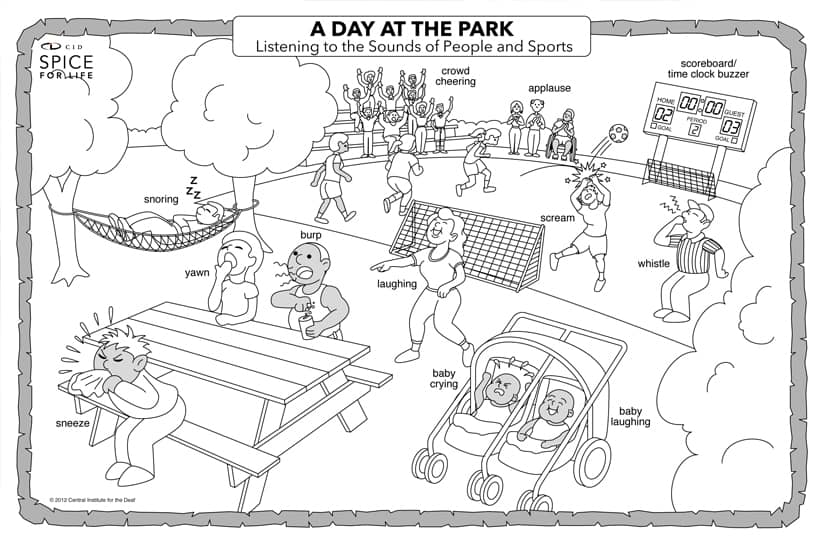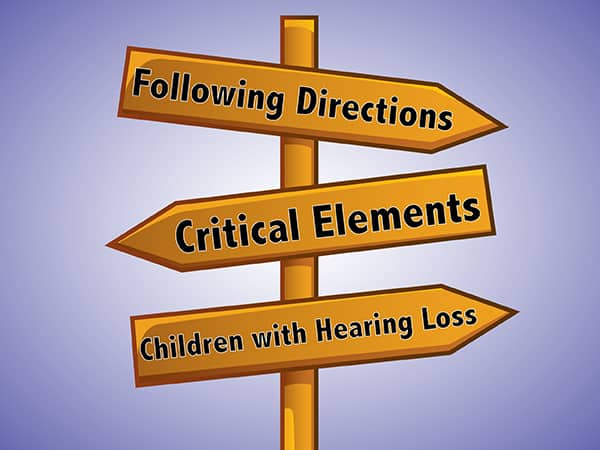Have you ever tried to pat your stomach and rub your head at the same time? If you can’t do it, you might feel frustrated. That feeling of frustration is similar to what students with hearing loss can experience when they are learning to listen to, understand, and follow directions. We can alleviate this frustration by teaching strategies to help students and by providing practice in the student’s zone of proximal development. To find the student’s zone of proximal development, pay close attention to the number of steps and critical elements for each direction.
The number of steps in a direction is the number of actions the student must carry out. Critical elements contribute to the complexity of each step in the direction. Think of critical elements as parts of a direction that are critical to carrying out the direction successfully. In some directions, every word could be a critical element depending on the context. Let’s take a closer look at how critical elements can make a direction more or less complex.
The simplest way to follow directions is to set up a situation to provide a limited context. A good way to do this is with a worksheet or picture scene. Given the following picture scene, determine the number of critical elements for this set of one-step directions: Circle a tree and the ball. Color the snoring man brown. Circle the crying baby.

In the first direction, circle is a critical element because if the student doesn’t hear or recall it, she won’t know what to do to the tree and ball. In the next direction, man is not a critical element because the picture shows only one snoring person. In the last direction, crying is a critical element because the picture shows a crying baby and a laughing baby.
When the directions aren’t controlled by the context, it can be more challenging to count the critical elements. With the one-step direction, “Get the blue pen on my desk,” ask yourself if blue is a critical element. It is if a black pen is also on your desk, but it isn’t if you only have blue pens on it. Get is a critical element because the student must hear and understand what to do. On can also be a critical element if the pens could be in your desk, and my is also one because it could be another teacher’s or a student’s desk.
Even when you have controlled the number of steps and critical elements for directions, it’s important to remember to teach students strategies to be successful. Visualization and rehearsal are the most helpful. Have the student picture herself carrying out the direction and repeat the steps aloud. So the next time you try to pat your head and rub your stomach, try picturing yourself doing it and repeat the steps aloud!
For these and other strategies to help students remember auditory information, download the Auditory Memory Strategies document from our free resource page. You might also consider taking CID’s online course, Strategies for Improving Auditory Memory, or checking out the following directions and auditory memory activities in our auditory training curricula, SPICE and SPICE for Life 2.
Jennifer Manley was a teacher of the deaf and associate coordinator of the Emerson Center for Professional Development at Central Institute for the Deaf- CID. Ms. Manley is co-author of the CID SPICE for Life auditory learning curriculum and author of the 2nd Edition CID SPICE auditory training curriculum.












